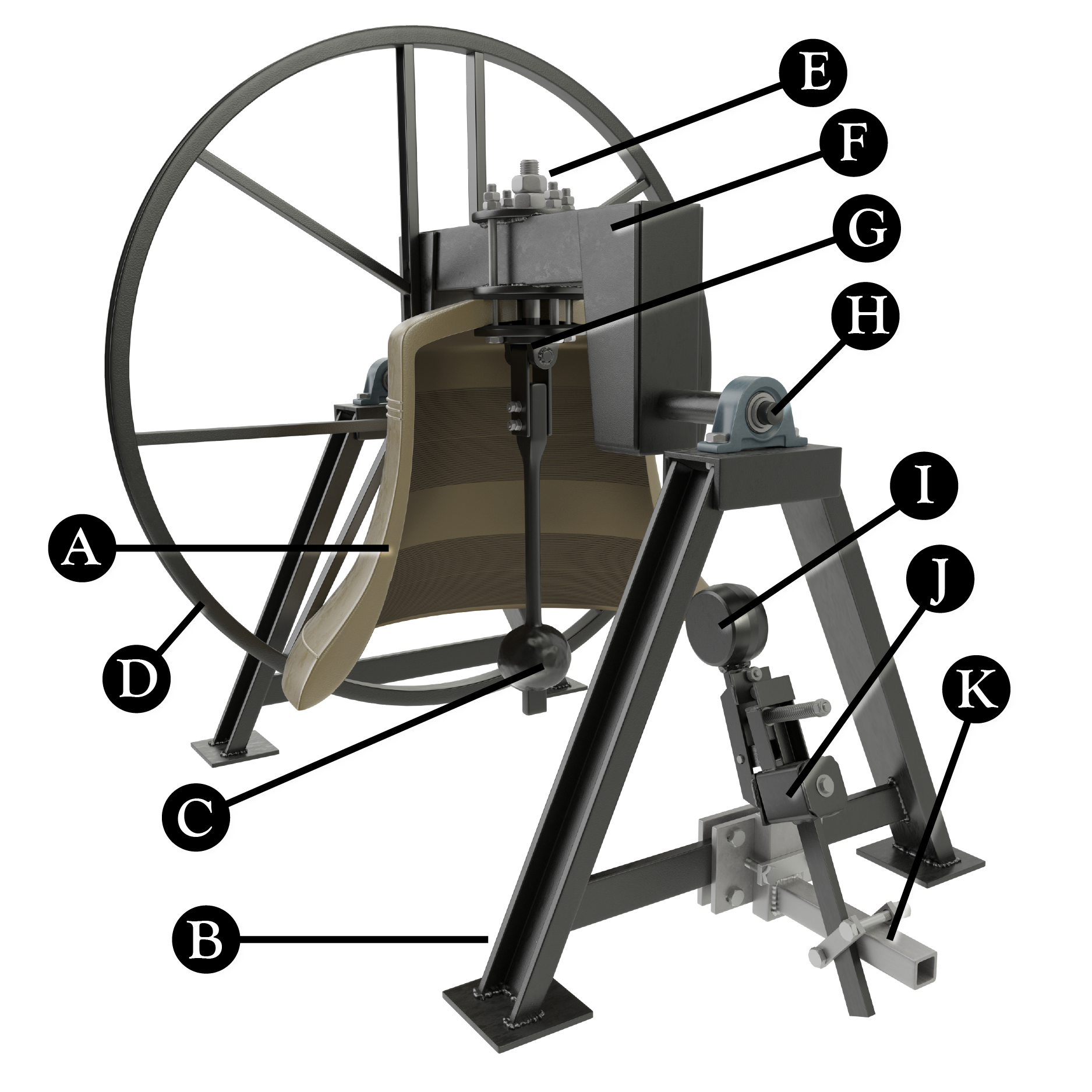Bell Ringing Components: Difference between revisions
Wandasparks (talk | contribs) (swinging bell diagram) |
Wandasparks (talk | contribs) mNo edit summary |
||
| Line 1: | Line 1: | ||
[[File:Bell-swinging-annotated.png| | [[File:Bell-swinging-annotated.png|border|right|Swinging Bell Components]] | ||
== Mechanical Components == | == Mechanical Components == | ||
Revision as of 15:27, 31 August 2016
Mechanical Components
Bell
The bell itself is the resonant portion of the system that provides a musical tone when struck. The General Campanology page provides a list of additional pages for further study into the physics of bells.
Suspension
In order to ring, the bell must be hung in such a way that it can freely resonate. Traditional bells are generally suspended from the top. This can be accomplished by simply providing holes for attaching bolts, or an optional crown top is provided for attachment.
Beams of wood or metal have been used for suspending bells. Wood has the advantage of being non-resonant. Double C-channel steel is often used to mount bells by placing the center bolts of the bell through the slot between channels. Tubular steel is the most unfavorable because of its resonant qualities that are detrimental to the sound of bells. Isolation materials must be used when multiple bells are suspended from the same beam to inhibit sympathetic vibrations.
Swinging Bell
A swinging bell
Headstock
A swinging bell is typically gimbal mounted to a headstock
Stationary Bell
Striker
We use the term striker to describe an element with an arm and head that excites a percussive instrument to resonate when they contact one another with a blow of some force. Actuation of the striker, regulation of the force and mass of the head for various purposes are described below.
Hand held mallet
Used to play orchestral bells, gongs and metallophones, these mallets consist of sticks with heads of relatively soft materials.
Internal clapper
We refer to any striker that is mounted inside the bell as a clapper.
For free swinging bells, the clapper is usually mounted to a hinge near the top center of the bell, aligned with the swinging axis of the bell so that it can strike the bell both fore and aft. Gravity and the motion of the clapper pivot relative to the bell gimbal axis causes the free clapper to strike the bell in its distinctive ding-dong fashion.
For stationary bells, the clapper is typically supported close to one ideal strike point and an externally applied force moves the head toward the bell for a single strike.
